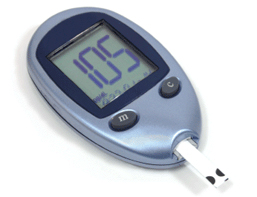National Diabetes Month: Let’s Stop this Growing Disease One Sugar at a Time!
 If you are blissfully unaware of the presence of diabetes in the United States, let me break it down for you. Almost 30 million children and adults in the U.S. have diabetes, with an additional 86 million that have prediabetes and are at risk for type 2 diabetes. These numbers are astounding and growing. Diabetes is the 7th leading cause of death in the United States and is completely manageable. Learn more about diabetes to keep yourself from becoming another statistic.
If you are blissfully unaware of the presence of diabetes in the United States, let me break it down for you. Almost 30 million children and adults in the U.S. have diabetes, with an additional 86 million that have prediabetes and are at risk for type 2 diabetes. These numbers are astounding and growing. Diabetes is the 7th leading cause of death in the United States and is completely manageable. Learn more about diabetes to keep yourself from becoming another statistic.
November is National Diabetes Month. Spend this month spreading awareness and promoting a healthy lifestyle to reduce its prevalence. The first step to preventing diabetes is understanding what it is.
Diabetes is a group of disorders where you have an increase of glucose, or sugar, in your blood. Diabetes does not discriminate- it can affect anyone, child or adult, male or female. The most common types are type 1, type 2, and gestational diabetes.
Type 1 diabetes is a condition where the pancreas makes little to no insulin and is caused by genetics and other unknown factors. Insulin is a hormone made by the pancreas to regulate blood glucose levels so they don’t get too high or too low. If your body does not make it, you may develop high blood glucose, or hyperglycemia, because the glucose cannot get into the cells and therefore stays in the blood. This condition can cause long-term complications if left untreated. Type 1 affects only 5% of people who have diabetes and is usually diagnosed in children and young adults.
Type 2 diabetes is a condition where your body improperly uses insulin or builds insulin resistance. This is caused by genetics and lifestyle factors. The pancreas pumps out more insulin to compensate for a high influx of glucose. If this process occurs over time, the pancreas gets worn out and eventually won’t make enough, leaving glucose in the blood instead of moving it into the cells. Type 2 diabetes is treated with lifestyle changes, oral medications and/or insulin. Type 2 diabetes can affect anyone at any time but it is more prevalent in the African American and Latino population. About 90-95% of people who have diabetes have type 2. Risk factors include being over the age of 45, being overweight, having a parent or sibling with diabetes, and being physically inactive.
Gestational diabetes is exclusive to pregnant women. Gestational diabetes is identified when a woman has higher than normal blood glucose levels but has never had diabetes before. The prevalence of this condition is as high as 9.2%.
Exercise can lower your blood glucose levels by enhancing your cell’s sensitivity to insulin. Eating healthy is key to prevent as well as manage diabetes complications.
November is about drawing attention to the need for diabetes education. Diabetes education is the first step towards prevention and treatment of this common disease. Managing diabetes isn’t easy; so offering your best support to others with the disease is important. See a Registered Dietitian Nutritionist and Certified Diabetes Educator for personalized self-management diabetes education.
Your Call to Take Action: Tell someone this week a fact you’ve learned from this blog. Spread your knowledge! Awareness is key! Click HERE for more help to manage your diabetes.

Leave a Reply
Want to join the discussion?Feel free to contribute!